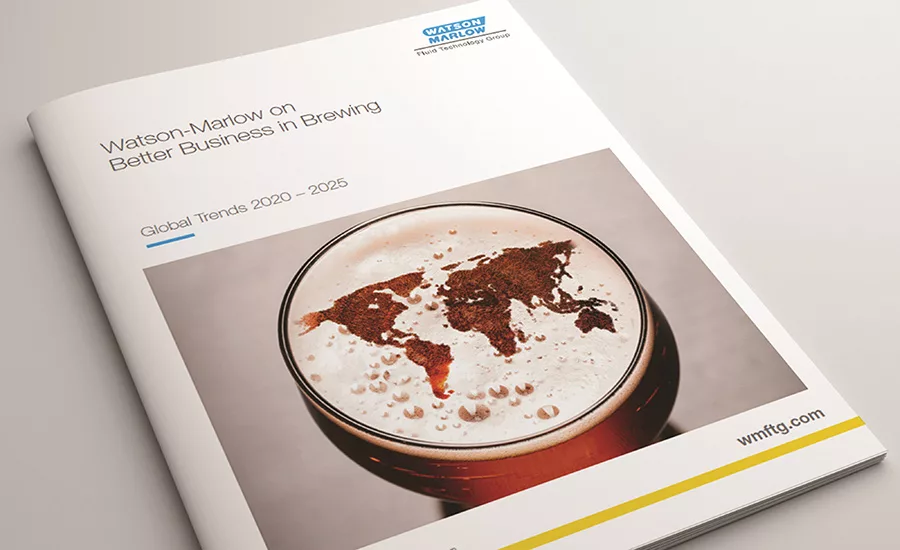Manufacturing News
Beer choices abound: Great for consumers but tough on large brewers
New technologies like AI and IIoT sensors plus horizontal distribution will give craft and microbreweries an edge over megalithic breweries

New technologies like AI and IIoT sensors plus horizontal distribution will give craft and microbreweries an edge over megalithic breweries.
Photo courtesy Watson-Marlow Fluid Technology Group
A new report from Watson-Marlow Fluid Technology Group (WMFTG), supplier of pumping technologies to the brewery industry, finds brewers will need to be able to create a wide range of beer styles while maintaining a high degree of process efficiency if they want to remain competitive.
“The pressure to produce high quality beers at the lowest cost increases every year,” says Rod White, master brewer and assistant professor at the International Centre for Brewing Sciences at the University of Nottingham. White helped develop the report, “Watson-Marlow on Better Business in Brewing: Global Trends 2020-2025.”
Consumers have been more discerning in their choice of beer, and want to try more beer styles—all while brewers have needed to be able to shift batches at a moment’s notice. At the same time, consumers expect higher water sustainability—something that has been mostly elusive to the brewing industry.
Recent years have seen slow growth for mainstream and discounted beer categories. This is due to rising consumer spending on premium and super-premium beers, says the study. Higher incomes and changing lifestyles have influenced consumers to try craft and artisan or premium beers.
In 2018, the U.S. was the second largest beer producing country worldwide—save China being the first. The U.S. has seen a sustained rise in new craft and microbreweries, which appear to be beating the big international brands in growth.
In addition, Europe’s craft beer trend has been rising, especially in Italy, Spain, France and the Czech Republic—though it took longer to develop in the UK, where consumers are making up for lost time. The global beer market is worth approximately $593 billion, and is projected to reach $685.4 billion by 2025, representing a CAGR of 1.8%.
Challenges and solutions for brewers
In many areas, brewers are not selling exclusively to distributors in large volumes, but also to supermarkets, which imposes many of the same issues that other producers face. Retailers insist on smaller batches, and they expect low stock levels to be replenished regularly at the brewer’s cost. This makes operation, production and delivery tough to forecast.
Water scarcity in some geographical areas and consumer sustainability expectations also challenge brewers, especially with wastewater output. For example, in smaller municipalities, sewer and wastewater treatment capacity can struggle to keep up with the volumes of brewery effluent. The high density of particulates in brewery wastewater can be too high and have improper pH values for faculties to handle, making it necessary for breweries to invest in their own pre-treatment systems, or face expensive surcharges.
To fix the supply chain issues, brewers are taking matters into their own hands by buying out specialist wholesalers. This has increased capital intensity. In addition, the emergence of new technologies—including sensors, data analytics, AI, IIoT and smart processing operations—is expected to help brewers predict operational performance when faced with challenging circumstances.
Applying machine learning through big data can be used in various ways. For example, it’s now possible to predict the percentage of beer fermented in each batch, and when it is time to move to the next step in production. By using AI to improve production forecasting, along with horizontal distribution channels, brewers can ensure smooth distribution, leading to reduced wastage.
For more information and to download the report, visit the Watson-Marlow News website.
Looking for a reprint of this article?
From high-res PDFs to custom plaques, order your copy today!







